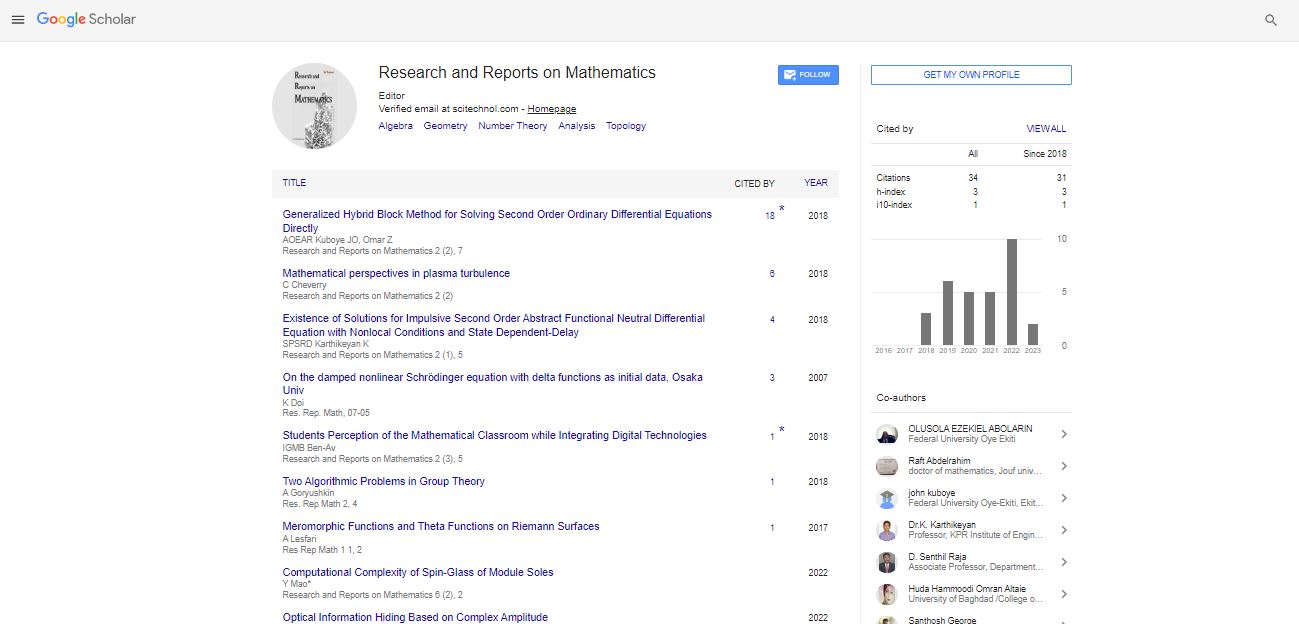Short Communication, Met Mater Int Vol: 8 Issue: 1
Assessing the Economic Viability of Mineral Resources
Valencia Mariz*
1Department of Mining Engineering, Federal University of Rio Grande do Sul, Porto Alegre, Brazil
*Corresponding Author: Valencia Mariz,
Department of Mining Engineering,
Federal University of Rio Grande do Sul, Porto Alegre, Brazil
E-mail: valencamariz@gmail.com
Received date: 24 February, 2024, Manuscript No. RRMT-24-139843;
Editor assigned date: 28 February, 2024, PreQC No. RRMT-24-139843 (PQ);
Reviewed date: 14 March, 2024, QC No. RRMT-24-139843;
Revised date: 21 March, 2024, Manuscript No. RRMT-24-139843 (R);
Published date: 28 March, 2024, DOI: 10.4172/Rrmt.1000203
Citation: Mariz V (2024) Assessing the Economic Viability of Mineral Resources. Met Mater Int 8:1.
Description
Mineral economics plays an important role in understanding the economic viability and sustainability of exploiting mineral resources. This study presents a comprehensive analysis of the factors influencing the economic evaluation of mineral deposits, focusing on case studies from various regions. The study examines key parameters such as resource quality, market demand, technological advancements, and regulatory frameworks, offering insights into the complex interplay of factors affecting mineral economics [1]. The assessment and extraction of mineral resources are pivotal for economic development worldwide. This section introduces the significance of mineral economics in evaluating the feasibility and profitability of mining projects. It outlines the objectives of the study, emphasizing the importance of case study analyses in understanding the practical implications of mineral economic theories.
Theoretical Framework of Mineral Economics
This section provides a theoretical foundation for understanding mineral economics. It discusses economic concepts such as resource rent, Net Present Value (NPV), Internal Rate of Return (IRR), and risk analysis in the context of mineral extraction projects. The role of discount rates, uncertainty, and commodity price forecasting in economic evaluations is also discovered [2]. The economic factors influencing copper mining in Chile, the world's leading copper producer. It analyses the geological characteristics of copper deposits, technological advancements in mining practices, market demand dynamics, and regulatory frameworks. The study assesses the economic viability of copper mining projects in different regions of Chile [3], considering environmental and social impacts.
A major global exporter of iron ore. It explores the geological and metallurgical properties of iron ore deposits, infrastructure development, transportation logistics, and market dynamics. The economic evaluation includes cost-benefit analysis, infrastructure investments, and the impact of global commodity prices on project profitability. Rare Earth Elements (REE) Mining in China [4], a dominant player in the global REE market. It discusses the geological distribution of REE deposits, technological innovations in extraction and processing, supply chain dynamics, and international trade policies [5]. The economic analysis includes price volatility, export quotas, and strategic implications for global supply chains. Historically one of the largest producers of gold in the world. It examines the geological characteristics of gold deposits, including depth, grade, and mineralogy, and discusses the technological advancements in mining and processing techniques [6]. The study evaluates the economic feasibility of deep-level mining operations, considering factors such as labour costs, energy consumption, and infrastructure development.
Market dynamics, including gold price fluctuations and global demand trends [7], are also analyzed to assess profitability and investment attractiveness. This section synthesizes the findings from the case studies to identify key factors influencing mineral economics [8]. It discusses geological factors, technological advancements, market demand trends, regulatory frameworks, and environmental considerations. The role of sustainability practices and community engagement in enhancing economic outcomes is also analyzed [9]. This study highlights the challenges and opportunities in mineral economics. It discusses emerging trends such as sustainable mining practices, digital transformation in mining operations, and the shift towards renewable energy minerals [10]. Policy implications, investment strategies, and future research directions are also examined.
Conclusion
This summarizes the main findings of the metals regarding the economic viability of mineral resources. It emphasizes the importance of integrating economic evaluations with environmental and social considerations for sustainable development. Future prospects for mineral economics are discussed, focusing on innovation, collaboration, and responsible resource management. This research provides a detailed analysis of the economic viability of mineral resources through case study analyses. It contributes to the understanding of key economic factors influencing mining projects, offering insights into the complexities of mineral economics in a global context.
References
- Komnitsas K, Zaharaki D. (2007) Geopolymerisation: A review and prospects for the minerals industry. Mineral Engineering. 20(14):1261-77.
- Jain N, Sharma DK. (2004) Biohydrometallurgy for nonsulfidic minerals—a review. Geomicrobiol. J. 21(3):135-44.
- Rubin AE, Ma C. (2017) Meteoritic minerals and their origins. Geochemistry. 77(3):325-85.
- Xu H, Van Deventer JS. (2000) The geopolymerisation of alumino-silicate minerals. Int. J. Miner. Process. 59(3):247-66.
- Zhang D, Zhou CH, Lin CX, Tong DS, Yu WH. (2010) Synthesis of clay minerals. Appl. Clay Sci. 50(1):1-1.
- Hunt CP, Moskowitz BM, Banerjee SK. (1995) Magnetic properties of rocks and minerals. Rock physics and phase relations: A handbook of physical constants. J3:189-204.
- Mc Bride MB. (1989) Surface chemistry of soil minerals. Minerals in soil environments. 1:35-88.
- Dove MT. (1997) Theory of displacive phase transitions in minerals. American Mineralogist. 82(3-4):213-44.
- Krivovichev SV. (2013) Structural complexity of minerals: information storage and processing in the mineral world. Mineralogical Magazine. 77(3):275-326.
- McCoy JT, Auret L. (2019) Machine learning applications in minerals processing: A review. Minerals Engineering. 132:95-109.
 Spanish
Spanish  Chinese
Chinese  Russian
Russian  German
German  French
French  Japanese
Japanese  Portuguese
Portuguese  Hindi
Hindi 